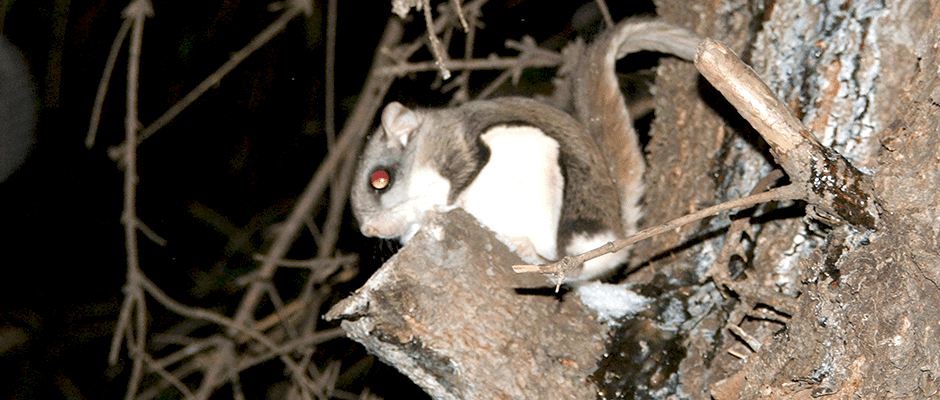Share this article
Flying squirrels to flee the stand, but not the forest
If you look into the tree canopies of the Stanislaus-Tuolumne Experimental Forest in California, you might spot a small northern flying squirrel catching air with its pseudo wings as it glides from tree to tree.
These northern flying squirrels (Glaucomys sabrinus) are a relatively easy species for researchers to study the landscape-scale effects of forest thinning when compared with other species such as spotted owls and fishers that have larger home ranges, according to Angela White, a research wildlife biologist with the U.S. Forest Service, who recently coauthored a study on the species.
As part of the study published in the journal Forest Ecology and Management, the research team looked at how forest thinning as well as prescribed burns, impacts the squirrels’ use of the forest. The squirrels, whose home range can extend from nearly 4 to 11 hectares, live in these smaller areas making them easier to study, White says.
In this experimental forest, the research team applied different treatments on forest stands. Eight blocks of land were thinned for fuels, eight blocks were thinned to recreate forests of the 1800s before human influence, and eight blocks were left unthinned.
In order to recreate historic conditions, the researchers used a map from the early 1800s that showed where trees had originally been in forests before Euro-American influence. For instance, trees back then appeared to be farther from each other, and so researchers removed trees in the area in order to replicate the setting.
After observing the squirrels’ movement and recording their population densities in the different areas, the researchers found that there was a higher density of the flying squirrels in the unthinned forest stands. White says the squirrels didn’t completely leave the forest, but rather used the trees in the nearby stand that wasn’t thinned. “It wasn’t having a negative impact,” she said. “They just changed where they focused their activity, but it didn’t appear to impact their reproductive success in the short-term of the study.”
White and her team then performed a prescribed fire to see if this would impact the squirrels’ movements, but found no additional effects on the squirrels.
White says this study shows the importance of looking at the complexities of the landscape in order to understand what’s happening with a population. As for this particular species, White says, “You can thin a large portion of the habitat and not have a negative impact on the population provided that habitat in the surrounding landscape is in the condition to absorb those numbers.”
Header Image: A northern flying squirrel stands in a tree. ©Megadem








